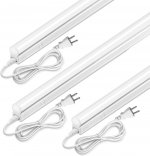Ricko1980
Member
- Location
- San Francisco
- Occupation
- Electrical Contractor
I've recently been in a discussion with some policy people about plug-in solar panels. Apparently there are a few products out there that are "plug-and-cord" PV panels, with an integrated microinverter, and some of these are marketed to be simply plugged in to a regular 120V receptacle. This is for a 300W maximum AC generation, using a 380W DC panel.
In one case that I was told to look at, the product manufacturer provides some kind of "smart hub" and CTs that clip in to the main service panel on the service wires, and this "smart hub" communicates with the PV module, turning off the PV supply if there's no demand in the unit. In this way, the grid is never backfed, and the manufacturer says that clients therefore don't need any utility interconnection agreement.
The prices were pretty expensive for something that can just shave off a bit of your load most of the time, in my opinion.
According to the folks I was talking to, these require no permit, and no interconnection agreement... they say, "They're like plugging in a toaster, no permit required."
Does this violate some NEC rule? It's not clear to me if the NEC applies to people plugging things in "like a toaster." Does the NEC regulate owner appliance use? I'm in California, and the California Electrical Code includes "use and occupancy" in its scope, but then I can't find any section that seems to really apply. Where in the NEC (or some other code?) would we find any requirements for occupants (such as not plugging in a toaster on an otherwise oversubscribed circuit)?
In one case that I was told to look at, the product manufacturer provides some kind of "smart hub" and CTs that clip in to the main service panel on the service wires, and this "smart hub" communicates with the PV module, turning off the PV supply if there's no demand in the unit. In this way, the grid is never backfed, and the manufacturer says that clients therefore don't need any utility interconnection agreement.
The prices were pretty expensive for something that can just shave off a bit of your load most of the time, in my opinion.
According to the folks I was talking to, these require no permit, and no interconnection agreement... they say, "They're like plugging in a toaster, no permit required."
Does this violate some NEC rule? It's not clear to me if the NEC applies to people plugging things in "like a toaster." Does the NEC regulate owner appliance use? I'm in California, and the California Electrical Code includes "use and occupancy" in its scope, but then I can't find any section that seems to really apply. Where in the NEC (or some other code?) would we find any requirements for occupants (such as not plugging in a toaster on an otherwise oversubscribed circuit)?


